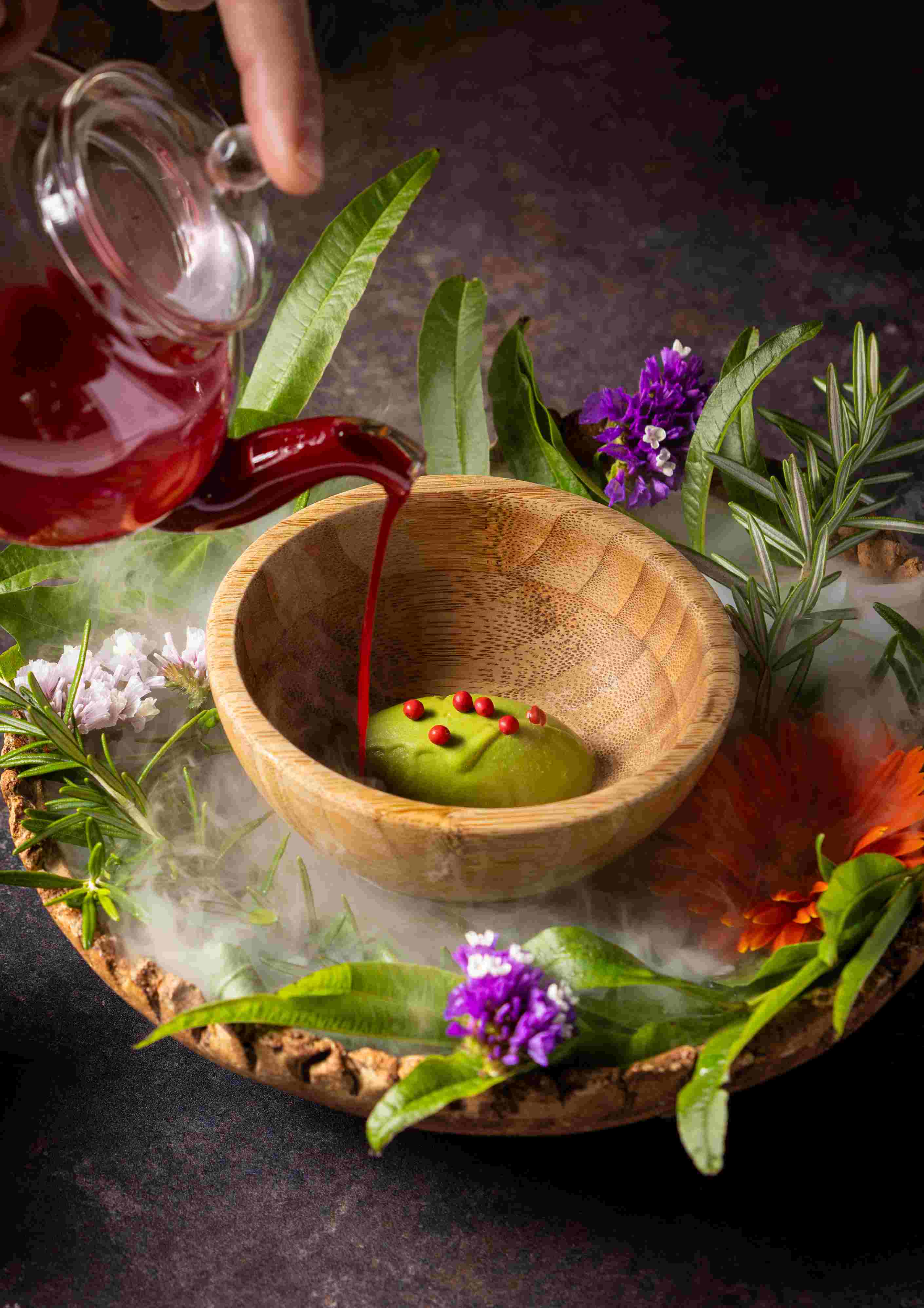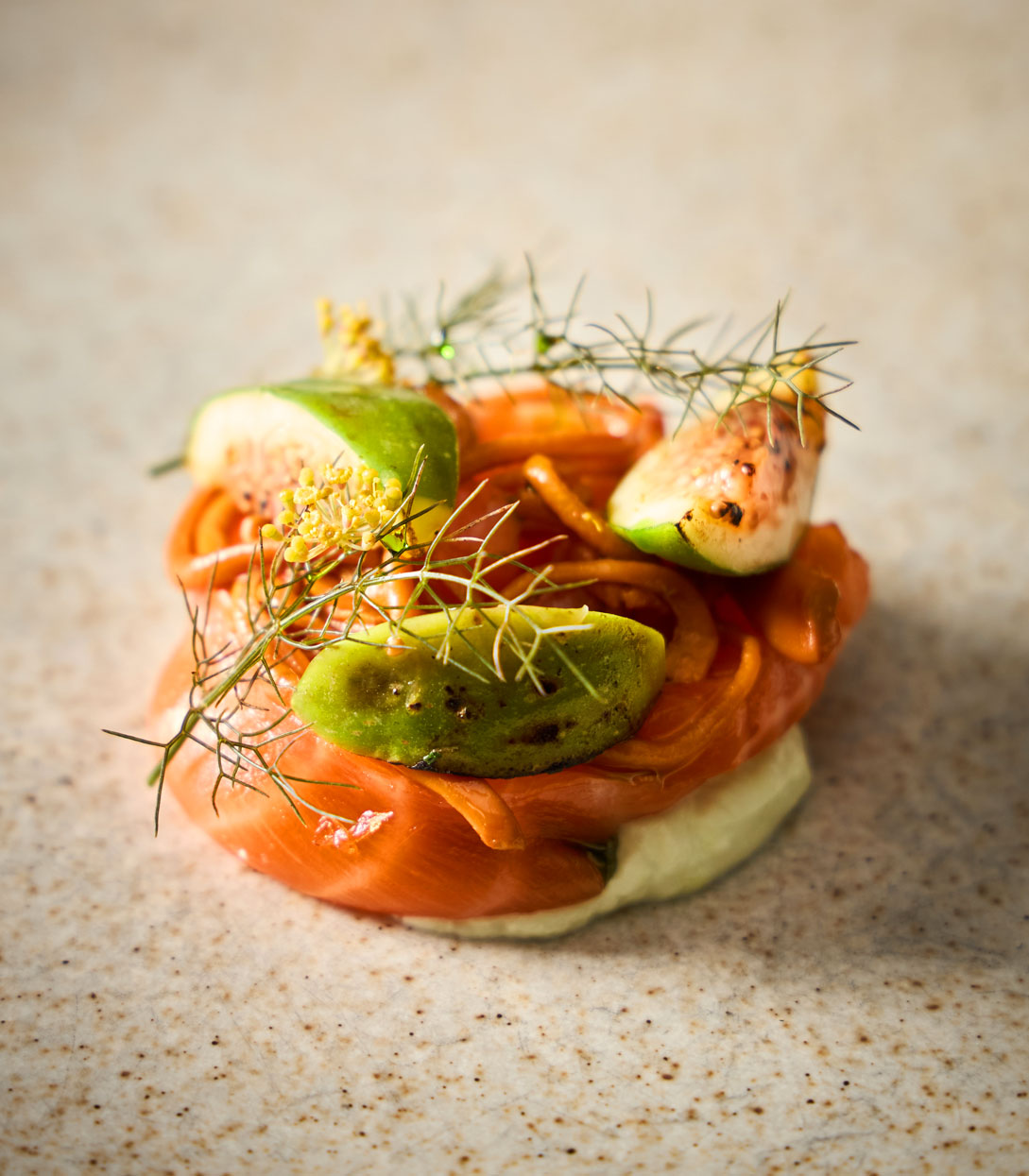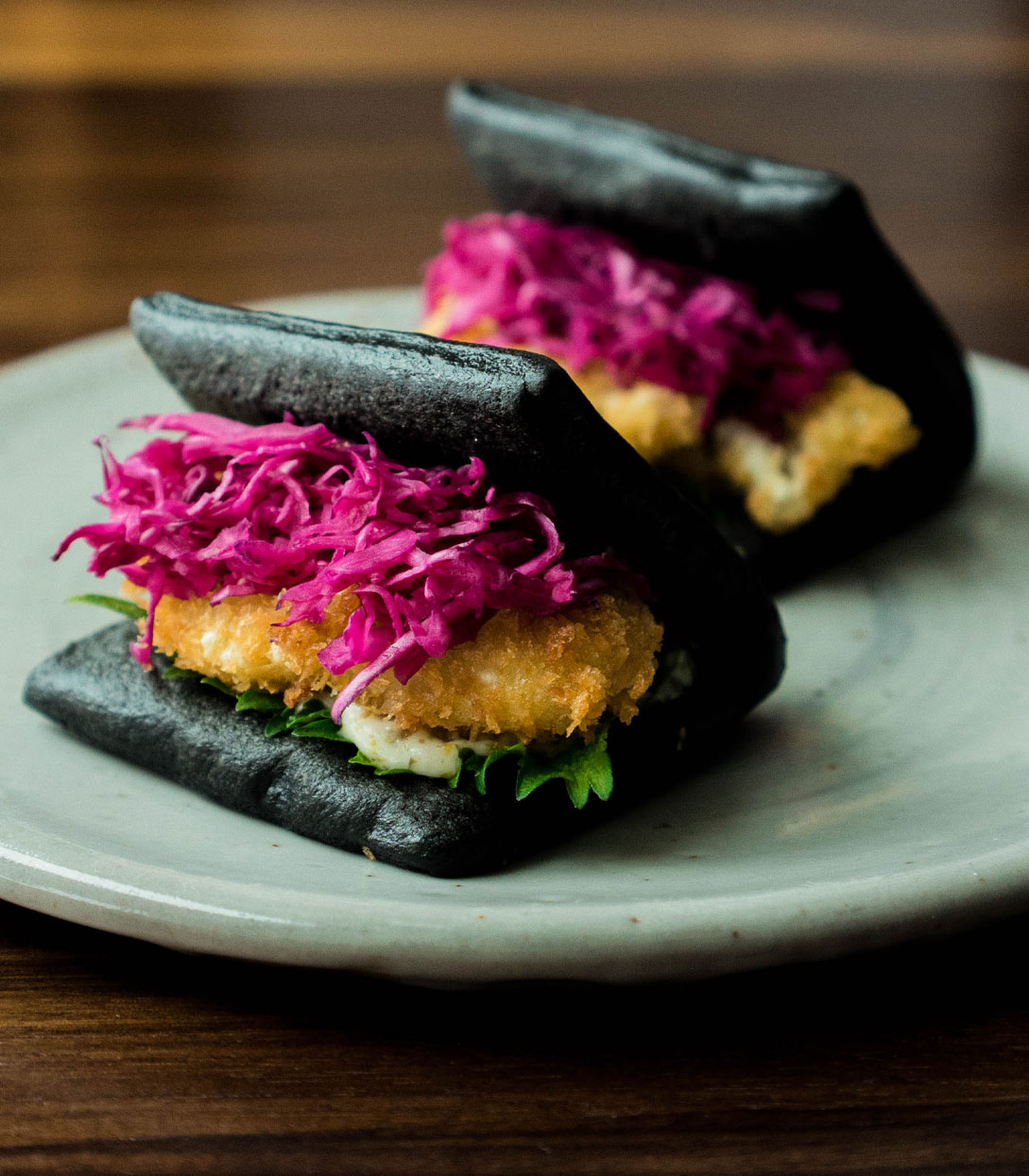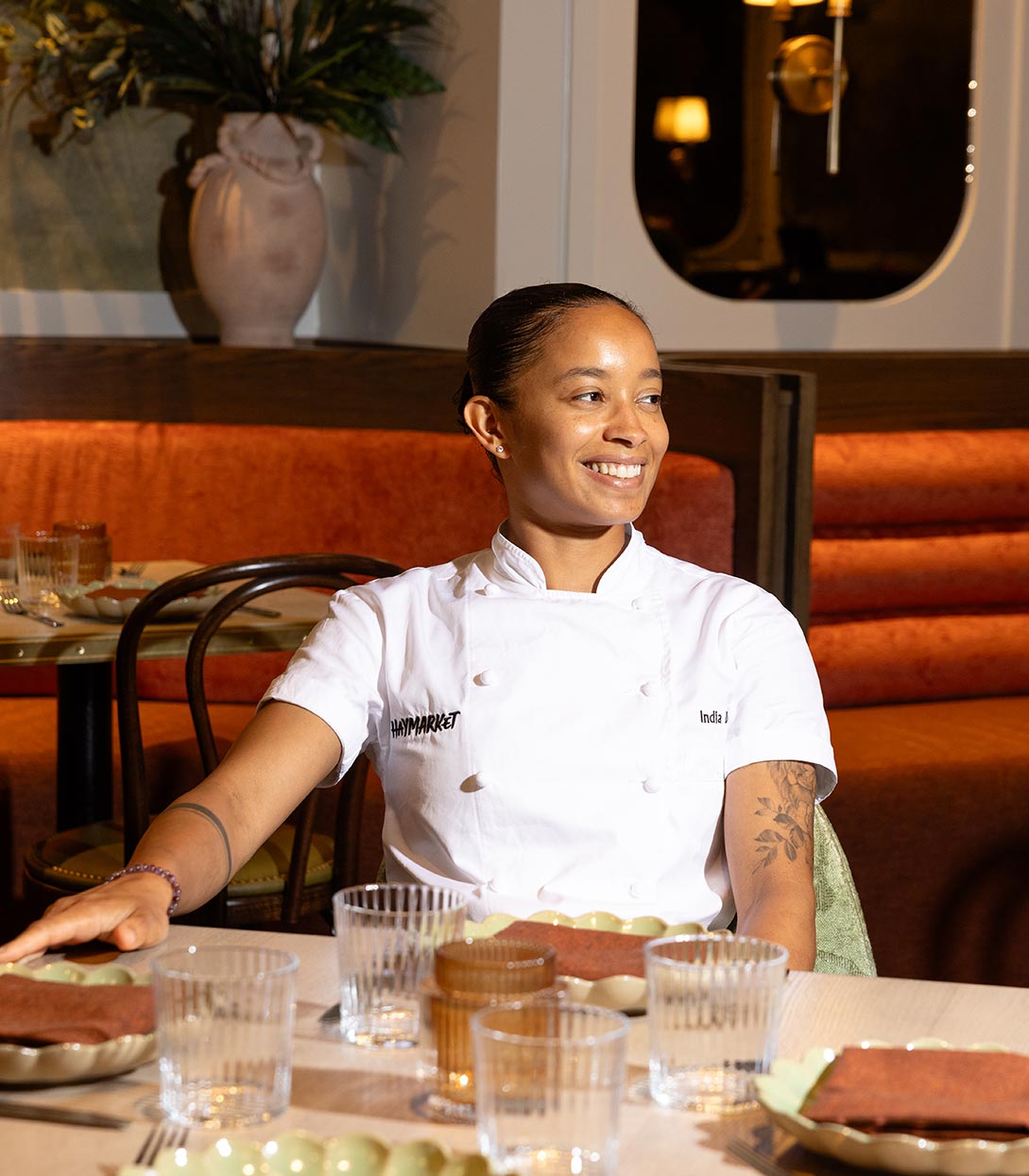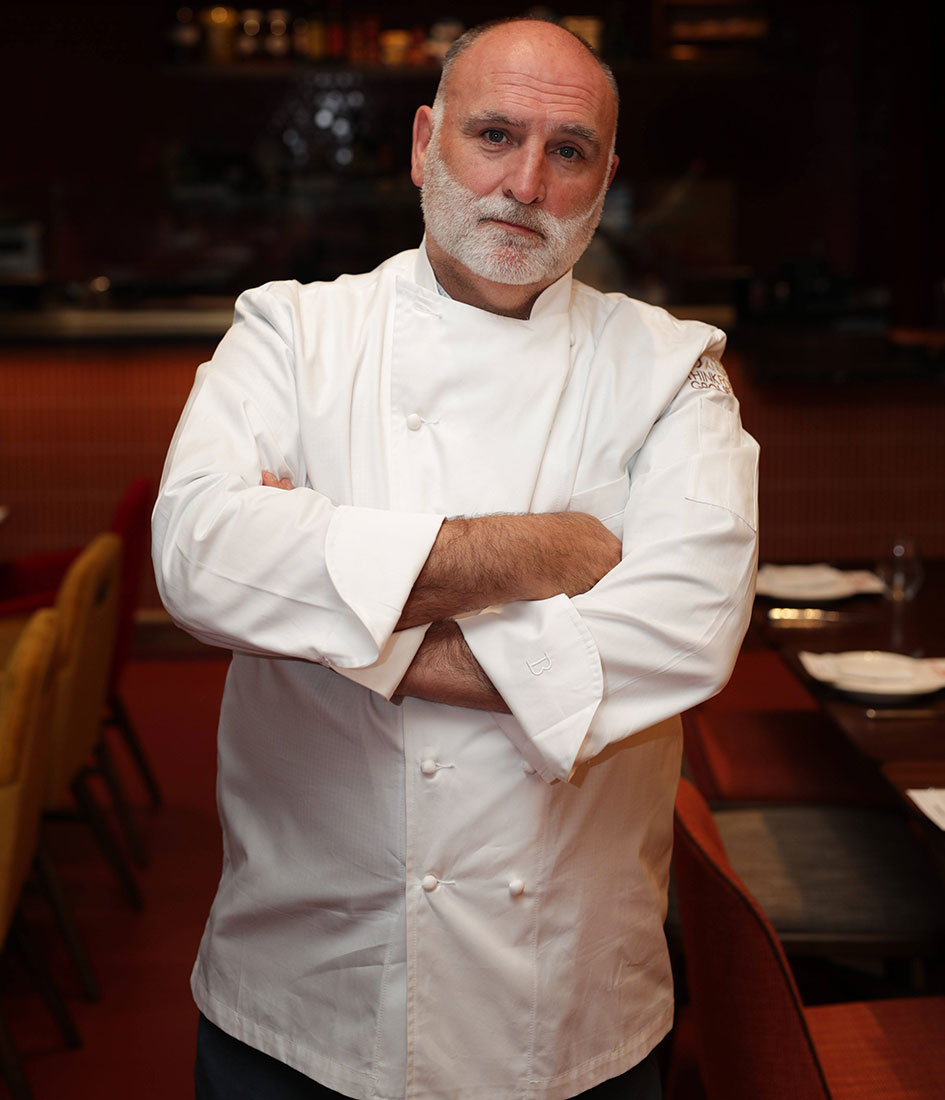One MICHELIN Star Clover Hill—one of Brooklyn’s most charming restaurants that’s quietly been plating some very high-level French-rooted, seasonal plates for the last two years—welcomed new executive chef and partner Sam Rogers, who most recently served as executive sous chef of Tribeca’s One White Street. This transition follows the darling restaurant’s loss of its former chef Charlie Mitchell (now leading FiDi’s fine dining Saga), who put the tiny dining room on the map, earning this year’s James Beard Award for New York’s Best Chef, and snagging a Michelin Star along the way.
But now under Rogers’ purview, Clover Hill changes course with a fresh culinary perspective. In place of that dialed-in French-rooted cooking, Rogers honors cuisines of Latin America where he grew up via dishes like a Camembert cheese and persimmon-filled Brazilian cuñape (an airy dough puff made from tapioca); and unctuous lengua, grilled American wagyu tongue with purple and white hominy-polenta
Co-owner Clay Castillo, who ran 20 Columbia Place’s previous incarnation, Iris Cafe, and lived above the restaurant for many years, explains that when he and partner Gabriel Merino initially hired Chef Charlie Mitchell, he didn’t have Michelin-level cooking experience and had never been an executive chef. He adds, “and now with Sam we have done the same thing.”
And yes, Rogers will have big shoes to fill, but he and the team are ready to seize the moment.
“I wanted to open a true New York restaurant, one of those that changes the city,” states Castillo. “One of those that is talked about even years after it’s gone.”
As the story of Clover Hill continues, what’s on tap for the recently reopened 20-seat dining room with its $245 10-course contemporary Latin American tasting menu (down in price from the former nine-course $305 meal)?
Below we caught up with Rogers to learn more about what guests can expect from Clover Hill’s new direction.
Congratulations on Clover Hill’s new menu. How are you feeling?
I feel lucky and grateful. Clover Hill has provided me with a platform that I couldn’t imagine having, along with a canvas to create the food that I’ve always wanted to cook. And I am fortunate to have a team that is incredibly dedicated, passionate, and supportive.
How has the menu changed under your direction?
Clover Hill has essentially reopened as a brand-new restaurant. The menu itself is a representation of me, my memories, and hopefully something very unique to the people that come to the restaurant.
Tell us more about that.
I grew up in various parts of Latin America and through all those years my strongest memories have revolved around food. The menu at Clover Hill is my storytelling of bits and pieces of my childhood memories that have become very formative to my career. I wanted to create a menu that allows me to recreate those memories and also allows me to highlight a part of the world that is often overlooked, and bring something new to New York.
How do you describe your style of cooking?
I would describe it as organic, uncomplicated, and ingredient focused. Organic in the sense that I believe that the best food comes from putting together ingredients that are naturally harmonious.
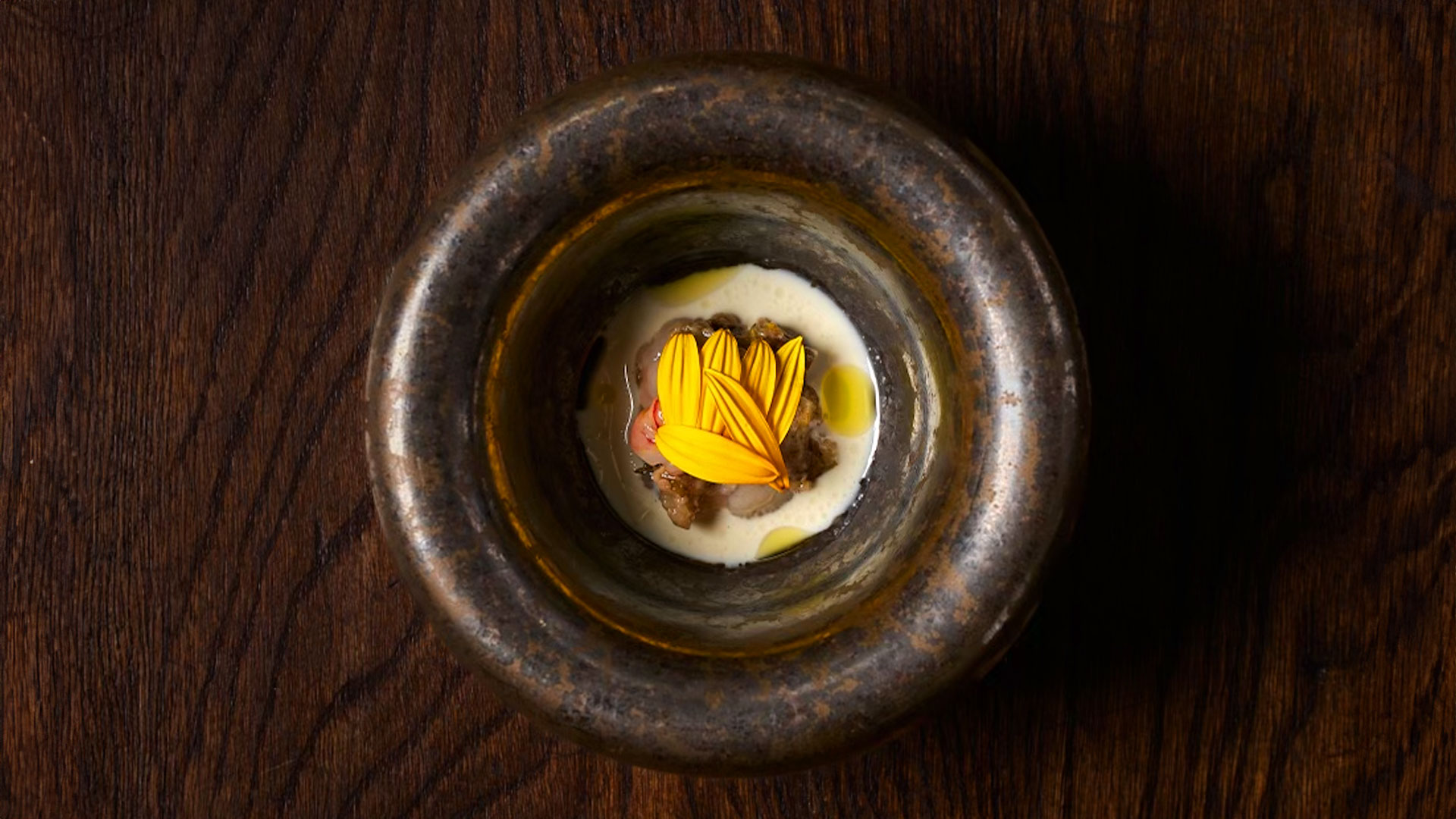
Which dishes are you most excited about right now?
There’s three that immediately come to mind: the sunchoke and prawn, the potato and huancaina, and the wagyu lengua with hominy polenta. For the sunchokes, inspiration came from the idea that sunchokes are in the sunflower family, and I don’t believe that many people know that their origin is North American. I love the idea of using something that grows in the dirt, and is unbelievably sweet, as a main ingredient for a crudo. Prawns are a natural pairing to me because they complement the natural sugars of the sunchoke, as well as take their distinct artichoke-y flavor very well. It’s a dish that on paper shouldn’t exist, but once you’ve had it, it blows you away. For the huancaina, I grew up disliking the creamy Peruvian cheese sauce but learned to appreciate it and always believed it had a place on a menu. Potatoes, however, are a true passion of mine, so I made a huancaina that is a little unconventional, a little bit more flavorful, and added a caviar twist to it, which to me replaced the olives that are usually served with that dish. The lengua dish came about as a distinct memory. I’ve been finding it difficult to source fresh hominy, so in an attempt to use an ingredient that is truly Bolivian, we went with a ground version of it. The dish becomes a more elegant approach to the aji de lengua that my grandmother used to cook for the family.
How does seasonality impact your cooking?
It’s immensely important in determining the menu. Following the seasons enables us to serve ingredients at moments when they are at their best, so our menu development starts with us identifying what produce is at its peak and then we create the rest of the dish based on that.
What’s a pro tip for dining at Clover Hill?
A coffee at the end of the meal with the pastelito is a must.

Hero image: Luis Paez / Clover Hill
Thumb image: Clover Hill / Sunchoke and Prawn










